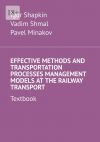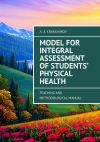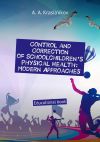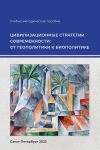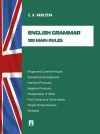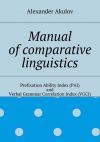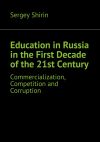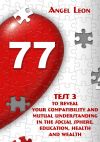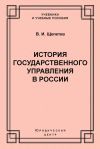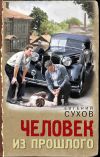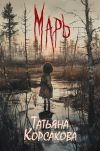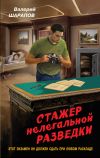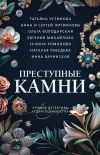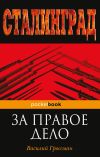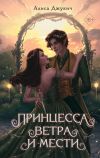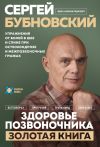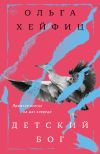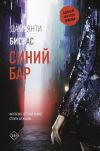Текст книги "Английский язык. Сравнительная педагогика"
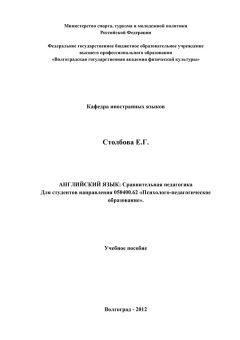
Автор книги: Елена Столбова
Жанр: Учебная литература, Детские книги
сообщить о неприемлемом содержимом
Текущая страница: 4 (всего у книги 5 страниц)
LESSON 11
INDIVIDUAL EDUCATION
TEXT A
1. Read and translate the text.
Individual Education (IE) is a new concept in schooling. The basic premise of IE is that education is a privilege and not an obligation. An IE school directs but does not demand, leads but does not drive, persuades but doesn't force, suggests but does not require. John Holt suggests that an alternative to authoritarian systems is to have schools in which each child can satisfy curiosity, develop abilities and talents, pursue interests, and obtain from adults and older children a glimpse of the great variety of richness of life.
Objectives of Individual Education
The objectives of IE are: 1) to generate motivation to learn the academic curriculum and to provide alternative ways of learning these subjects; 2) to offer guidance about how to best proceed in various ways of learning the academic curriculum; 3) to provide testing of learning at frequent intervals; 4) to provide opportunities for supervised social interaction with other individuals; 5) to provide opportunities to learn a variety of non-academic subjects.
Academic Curriculum
The academic Curriculum in an Individual Education school includes the usual elements such as language, ails, arithmetic, science and social sciences.
Creative Curriculum
The creative curriculum is a special means of fostering resourcefulness by helping the child locate and develop special talents and abilities. Teachers and students are invited to submit ideas for classes of special interest. Creative courses can motivate and reinforce learning in the academic subjects; to build a tree house or bake cookies, one must be able to read and measure.
Socialization
The socialization process is aided in an IE school through the concept of discipline, in the homeroom, and through advisement by the teacher/advisors. Education is seen as a voluntary association with equals that creates an atmosphere of mutual respect and regard.
IE has three rules that the child must understand, and agree to follow before being admitted to an IE school. After a third violation a child attends a conference with his teacher/advisor (TA) and the school principal; after the sixth violation the parents of the child are brought into the conference session; suspension occurs after the ninth and to the eleventh violation; and after the twelfth violation the child is considered for expulsion. Expulsion or suspension is rare at IE schools because students eventually realize that they have little need to rebel in the school.
Advising is a function of every faculty member in IE school. The child chooses his teacher/advisor by petition. The TA’s role is to listen, offer help and advice, give information, and allow the child freedom to make decisions and even to make mistakes.
Advantages of IE
The educators list six advantages of IE schools:
1) Children learn more academically in less time.
2) Children like this kind of school.
3) Schools are orderly and disciplined.
4) Children get a better education for life.
5) Teachers prefer teaching in IE schools.
6) Parents prefer IE to traditional schools.
Vocabulary:
obligation – обязанность
lead – руководить
force – заставлять
obtain – добиваться
generate – вызывать чувство
proceed – продвигаться
fostering – воспитание
regard – внимание
occur – случаться
rebel – протестовать
demand – требовать
persuade – убеждать
suggest – советовать
glimpse – проблеск
guidance – руководство
ail – беспокоить
reinforce – подкреплять
suspension – отстранение
expulsion – исключение
petition – просьба
2. Give English equivalents:
Заставлять, любопытство, взрослый, реклама, соглашаться, управлять, понятия, развивать, цели, включать, создавать, необходимость, дисциплинированный, возможность, следовать, посещать, достоинство, предпочитать, правила, советовать, средство, измерять, осознавать, выбирать, принимать решения, различный.
3. Translate these expressions:
Authoritarian system, abilities, academic curriculum, mutual respect, basic premise, social sciences, to be aided in, to make mistakes, richness of life, resourcefulness, school principal, to pursue interests, non-academic subjects, voluntary association, third violation, to satisfy.
4. Answer the questions:
1. When does a child attend a conference with his teacher at the school principal?
2. What are the advantages of IE?
3. What does the academic curriculum in an Individual Education school include?
4. How many rules does IE have?
5. What is the basic premise of IE?
6. What are the objectives of IE?
7. What is an alternative to authoritarian system of school?
5. Translate into English:
1. Ребенок должен понимать и следовать правилам, чтобы быть принятым в школу индивидуального обучения.
2. Роль учителя в школах индивидуального обучения – помогать, советовать, давать информацию и предоставлять свободу принимать решения.
3. Исключение из школы индивидуального обучения – редкое явление.
4. Творческая учебная программа помогает детям развивать их таланты и возможности.
5. Школа индивидуального обучения руководит, но не требует, убеждает, но не заставляет.
6. Детям нравится такой вид школы.
7. Образование в школах индивидуального обучения создает атмосферу взаимоуважения и взаимопонимания.
TEXT B
6. Read and translate the text.
John Dewey (October 20, 1859 – June 1, 1952) was an American philosopher, psychologist and educational reformer whose ideas have been influential in education and social reform. Dewey was an important early developer of the philosophy of pragmatism and one of the founders of functional psychology. He was a major representative of the progressive and progressive populist philosophies of schooling during the first half of the 20th century in the USA.
Although Dewey is known best for his publications concerning education, he also wrote about many other topics, including experience, nature, art, logic, inquiry, democracy, and ethics.
In his advocacy of democracy, Dewey considered two fundamental elements – schools and civil society – as being major topics needing attention and reconstruction to encourage experimental intelligence and plurality. Dewey asserted that complete democracy was to be obtained not just by extending voting rights but also by ensuring that there exists a fully formed public opinion, accomplished by effective communication among citizens, experts, and politicians, with the latter being accountable for the policies they adopt.
The great revolution in teaching by the end of the nineteenth century and the beginning of the twentieth century was a revolution made by John Dewey. He developed several critiques of old pedagogy. The main critique was that the intellectual apparatus didn’t work alone. The intellectual apparatus, Dewey said, actually depended on motivation. Lessons constructed in a logical and/or historical way needed to be changed. The lessons should be put in a psychological way. So, Dewey took once more a theme from Comenius and Rousseau. Lessons should start with the problems of the world –problems that brought interest and motivation for the children. The teachers, of course, could show the logical and sequence of an issue, but they should know that the child learns this only after a translation of the topics in a psychological way.
General understanding:
1. Who was John Dewey?
2. What was his main critique?
3. What were his two fundamental elements in education?
4. What did his publications concern?
5. How did he made the great revolution in teaching?
LESSON 12
DISTANCE LEARNING
TEXT A
1. Read and translate the text.
Many people have a need and would benefit greatly from advancing their education. Since life prevents many people from becoming fulltime students, some of them turn to distance learning to further themselves. There are many institutions that currently offer distance learning courses, and while quality will vary, advancing your education can never hurt.
There are several different types of distance learning courses that both traditional and non-traditional students use to fit education into their hectic lifestyle. The purpose of distance learning is to connect instructors and students across a large distance, but the format and scheduling used can have a large impact on the learning experience. One of the most popular types of distance learning courses is learning courses.
Learning courses are essentially internet classes that have no meeting time or physical meeting place. All assignments are given and turned in online. Typically there is some kind of forum that students log into to receive assignments and information about the class.
Many students enjoy learning classes because they can complete work whenever they have time. Some distance learning courses require students to commute to a classroom on a nearby campus where they will receive instruction and lectures indirectly. The most common format is a classroom with a TV that is either connected to a live feed where the teacher resides, or a recorded lesson is played. Many towns and cities with mid to large colleges, will broadcast certain classes over public access channels so that students can receive lectures and class information from the comfort of their home.
One advantage of broadcasting lessons over public access television is that with a VCR, you can record the lesson and watch or rewatch the lesson when you have time or if you do not understand a particular point.
Having lessons recorded can be a valuable tool when studying for a test since you can watch the actual lecture again or review certain points. Although distance learning has caught on and is heavily used by non-traditional students who have day jobs and a busy lifestyle, many high schools are taking advantage of distance learning as well.
The reason behind this is because the school does not have to hire another teacher therefore high schools can gain access to extremely skilled and knowledgeable teachers through distance learning courses. It can also allow high schools to offer specialized classes and develop high caliber programs that can delve deeply into a particular field.
This is particularly useful for rural school districts that may have difficulty attracting and paying for the best teachers, but with distance learning classes, they can provide their students with instruction from the best available instructors. Distance learning courses continue to increase in popularity and variety.
Learning courses are especially becoming more popular since nearly everyone has internet access and learning courses allow students to complete assignments at their own pace in the comfort of their own home.
Today, distance learning education offers these same people the best route to get a better job as well as get an earlier promotion since they can earn a degree while holding down their existing job and so, there is no need to take years off just to become better educated. The best part about distance learning education is that you can set your own timeframe in which to complete your education.
Not having to take time off from your present occupation is one of the biggest advantages to choosing distance learning education and what's more, the degree that you will earn will be at par with degrees that are earned through taking regular courses.
Vocabulary:
benefit – выигрывать
prevent – препятствовать
hectic – беспокойный
assignments – задания
campus – здание университета
reside – проживать
advantage – преимущество
allow – позволять
pace – темп
timeframe – сроки
vary – различаться
fit – соответствовать
scheduling – планирование
complete – завершать
feed – поддерживать
broadcast – транслировать
hire – нанимать
delve – вникать
route – путь
par – равенство
2. Give English equivalents:
Продвижение, обращаться к, испытание, доступный, квалифицированный, большое влияние, ценный, вуз, предлагать, полезный, трудность, средний колледж, некоторые пункты, высокотехнологичный, пересматривать, напряженный образ жизни, конкретная область.
3. Translate these expressions:
To rewatch the lesson, public access, learning experience, valuable tool, rural school districts, existing job, particular point, recorded lesson, earlier promotion, meeting time, popularity and variety, holding down, fulltime students.
4. Answer the questions:
1. What are the advantages of broadcasting lessons?
2. What difficulties do rural school districts have?
3. Why are learning courses so popular?
4. Who can broadcast certain classes?
5. Why do many students enjoy learning classes?
6. What is the purpose of distance learning?
7. What are learning courses?
5. Translate into English:
1. Дистанционные курсы позволяют студентам выполнять задания в своем собственном темпе, не выходя из дома.
2. С помощью видеомагнитофона студент может записать урок и пересматривать его несколько раз.
3. При дистанционном обучении вы можете устанавливать свои собственные сроки получения образования.
4. Существует несколько видов дистанционного обучения.
5. Многие средние школы используют элементы дистанционного обучения, чтобы иметь возможность консультироваться с самыми квалифицированными и знающими преподавателями.
6. После просмотра лекции вы можете сами протестировать себя, чтобы узнать усвоили ли вы урок.
7. Курсы дистанционного обучения стали расширяться в связи с появлением широкого доступа к интернету.
TEXT B
6. Read and translate the text.
Maria Montessori (August 31, 1870 – May 6, 1952) was an Italian physician and educator, a noted humanitarian and devout Catholic best known for the philosophy of education which bears her name. Her educational method is in use today in public as well as private schools throughout the world.
Maria Montessori was born in 1870 in Chiaravalle, Italy. Montessori was the first woman to graduate from the University of Rome La Sapienza Medical School, becoming one of the first female doctors in Italy. She was a member of the University's Psychiatric Clinic and became intrigued with trying to educate the "special needs" or "unhappy little ones" and the "uneducable" in Rome.
In 1896, she gave a lecture at the Educational Congress in Torino about the training of the disabled. The Italian Minister of Education was in attendance, and, sufficiently impressed by her arguments, appointed her the same year as director of the Scuola Ortofrenica, an institution devoted to the care and education of the mentally retarded.
Because of her success with these children, she was asked to start a school for children in a housing project in Rome, which opened on January 6, 1907, and which she called "Casa dei Bambini" or Children's House. Children's House was a child care center in an apartment building in the poor neighborhood of Rome. She was focused on teaching the students ways to develop their own skills at a pace they set, which was a principle Montessori called "spontaneous self-development". Maria Montessori died in the Netherlands in 1952, after a lifetime devoted to the study of child development.
General understanding:
1. What was her educational method?
2. Why was she asked to start a school for disabled children?
3. What institute did she graduate from?
4. What kind of center was Children’s House?
5. Was her method of education famous and successful?
LESSON 13
EDUCATIONAL SYSTEM IN GREAT BRITAIN
TEXT A
1. Read and translate the text.
All state schools in Britain are free, and schools provide their pupils with books and equipment for their studies. All British children must stay at school from the age of 5 until they are 16. Many of them stay longer and take final examination when they are 17 or 18. Parents can choose to send their children to a nursery school or a preschool playgroup to prepare them for the start of compulsory education.
Before 1965 all children had to go through special intelligence tests. There were different types of state secondary schools and at the age of 11 children went to different schools in accordance of with the results of the tests.
State schools are divided into the following types:
Grammar schools. Children who go to grammar schools are usually those who show a preference for academic subjects, although many grammar schools now also have some technical courses.
Technical schools. Some children go to technical schools. Most courses there are either commercial or technical.
Modern schools. Boys and girls who are interested in working with there hands and learning in a practical way can go to a technical schools and learn some trade.
Comprehensive schools. These schools usually combine all types of secondary education. They have physic, chemistry, biology laboratories, machine workshops for metal and woodwork and also geography, history and art departments, commercial and domestic courses.
There are also many schools which the State doesn’t control. They are private schools. They charge fees for educating children and many of them are boarding schools, at which pupils live during the term time.
At 16 pupils take a national exam called «G.C.S.E.» (General Certificate of Secondary Education) and then they can leave school if they wish. This is the end of compulsory education.
Some 16-year-olds continue their studies in the sixth form at school or at a sixth form college. The sixth form prepares pupils for a national exam called «A» level (advanced level) at IS. You need «A» level to enter a university.
Other 16-year-olds choose to go to a college of further education to study for more practical (vocational) diplomas relating to the world of work, such as hairdressing, typing or mechanics.
Universities and colleges of higher education accept students with «A» levels from 18. Students study for a degree which takes on average three years of fulltime study. Most students graduate at 21 or 22 and are given their degree at a special graduation ceremony.
There are over 90 universities in GB. They are divided into three types: the old universities (Oxford, Cambridge and Edinburgh Universities), in the 19th century universities, such as London and Manchester universities, and the new universities.
University life is considered «an experience». The exams are competitive but the social life and living away from home are also important. The social life is excellent with a lot of clubs, parties, concerts, bars.
There are not only universities in Britain but also colleges. Colleges offer courses in teacher training, courses in technology and some professions connected with medicine.
Vocabulary:
state – государство
equipment – оборудование
trade – ремесло
boarding school – интернат
accept – принимать
competitive – конкурсный
academic – учебный
preference – предпочтение
charge fees – назначать цену
enter – поступать
provide – обеспечивать
compulsory – обязательный
combine – сочетать
advanced – продвинутый
experience – опыт
graduation – окончание
secondary – средний
private – частный
wish – желать
further – дальнейший
2. Give English equivalents:
Оборудование, сочетать, сдать экзамен, контролировать, семестр, частный, интернат, различный, выбирать, следующий, дальнейший, обеспечивать, посылать, государственный, интересоваться, принимать, важный, связанный с, начало, обучение, курсы, ремесло.
3. Translate these expressions:
Advanced level, vocational diplomas, educating children, art departments, intelligence tests, to enter a university, in accordance of, degree, graduation ceremony, pre-school playground, full-time study, machine workshops, compulsory education, woodwork, preference, academic subjects, on average, competitive exams, teacher training.
4. Answer the questions:
1. What are three types of universities of Great Britain?
2. What are modern schools?
3. What do private schools do?
4. What is a national exam? What is “A” level”?
5. What are technical schools?
6. Who goes to grammar schools?
7. What are comprehensive schools?
5. Translate into English:
1. Вузы принимают студентов с продвинутым уровнем.
2. Некоторые ученики отдают предпочтение учебным предметам.
3. Существуют школы, которые не контролируются государством.
4. В технических школах большинство курсов – коммерческие.
5. Все государственные школы в Великобритании бесплатные.
6. Частные школы назначают цену за образовательные услуги.
7. Студенты оканчивают вуз в возрасте 21-22 лет.
TEXT B
6. Read and translate the text.
Janusz Korczak (July 22, 1878 – August 1942) was a Polish children's author, and pediatrician. After spending many years working in an orphanage, he refused freedom and stayed with the children when the organisation was sent to extermination camps.
Korczak often employed the form of the fairy tale in order to actually prepare his young readers for the dilemmas and difficulties of real adult life, and the need to take responsible decisions.
His famous books were “King Matt the First” and its sequel “King Matt on the Desert Island”. Korczak depicted a child prince who was catapulted to the throne by the sudden death of his father, and who must learn from various mistakes.
The later “Kajtus the Wizard” anticipated Harry Potter in depicting a schoolboy who gained magic powers (and its popularity during the 1930s, in both Polish and in translation to several other languages, was nearly comparable to the present popularity of the Potter series).
Kajtus had, however, a far more difficult path than Harry Potter: he had no Hogwarts-type School of Magic where he could be taught by expert mages, but must learn to use and control his powers all by himself – and most importantly, to learn his limitations.
In his pedagogical works, Korczak shared much of his experience dealing with difficult children.
General understanding:
1. Who was Janusz Korczak?
2. What were his famous books?
3. How did he depict children?
4. Why did he use the form of the fairy tale?
5. What did he do in the orphanage?
Правообладателям!
Это произведение, предположительно, находится в статусе 'public domain'. Если это не так и размещение материала нарушает чьи-либо права, то сообщите нам об этом.